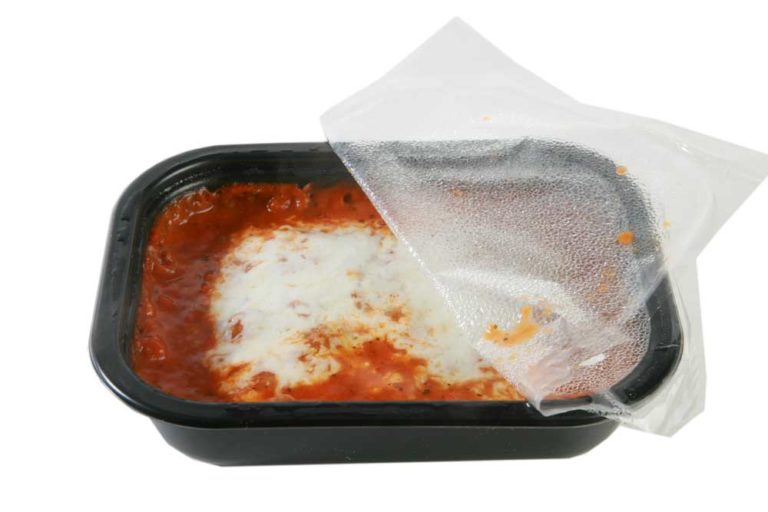In the world of food packaging, lidding films play an essential role in preserving product quality, ensuring safety and enhancing the overall consumer experience. Different films are used to seal food containers, providing protection against contamination while maintaining the freshness, aroma and integrity of the food inside. From recyclable lidding films to tray lid films, these packaging solutions offer diverse applications, including a variety of sealing options for different substrates like PP, PE, PET, PVC and Aluminium.
In this article, we explore several key benefits of lidding films for food packaging, including their role in aroma retention, puncture resistance, temperature resistance and sealing options. By understanding these features, manufacturers and consumers alike can appreciate the value that lidding films provide in ensuring the safety, durability and freshness of food products.

Aroma Retention in Lidding Films Preserves Food Quality
One of the most significant advantages of lidding films is their ability to preserve the aroma and flavour of packaged food. Aroma plays a crucial role in consumer satisfaction and product appeal. Top lidding films help prevent flavour loss by acting as a barrier to external elements that could affect the taste and smell of food.
How Aroma Retention Works?
- Flavour preservation: By maintaining the internal atmosphere of the package, films ensure that the original flavour of the food is locked in.
- Freshness retention: Keeping aromas intact enhances the overall freshness of the food, extending shelf life without the need for additional preservatives.
For food packaging, especially for products like ready meals, preserving the aroma and flavour is essential. Lidding film protects the food from environmental factors that might compromise its quality, ensuring that the product remains as fresh as possible when it reaches consumers.
Puncture Resistance Matters: Ensuring Packaging Integrity with Recyclable Lidding Films
The ability of films to resist punctures is vital in maintaining the integrity of the food package. Puncture resistance ensures that the film can withstand handling, transportation and storage without compromising its protective seal.
How Puncture Resistance Enhances Packaging?
- Prevents leaks: Strong, puncture-resistant films reduce the risk of leaks, ensuring that liquids and semi-liquids stay securely contained.
- Protects from damage: During transportation or while on the shelf, the packaging may be subjected to rough handling. Top lid film prevents physical damage that could otherwise cause contamination or spoilage.
- Ensures hygiene: A well-sealed package prevents exposure to contaminants, maintaining hygiene and food safety throughout the distribution process.
In food packaging, especially for liquid products such as soups, sauces or beverages, puncture resistance is a crucial feature. The sealing strength provided by thermal films helps maintain the integrity of the product, ensuring it remains secure until opened.
High-Temperature and Freezing Resistance: The Versatility of Lidding Films in Food Packaging
Temperature fluctuations are a common challenge in food packaging. Products may need to be stored at different temperatures – ranging from freezing conditions for frozen foods to high temperatures for cooked meals or hot-fill products. Tray lidding films offer the versatility to perform under these extreme conditions.
Resistance to High Temperatures
- Heat resistance: Certain lid films are designed to withstand high temperatures, ensuring that packaging remains intact and functional when exposed to hot environments.
- Perfect for cooked foods: Thermal films are ideal for sealing hot-fill products such as soups, stews and ready meals, providing secure packaging that withstands the heat during processing.
Freezing Resistance for Frozen Foods
- Retains strength in freezing conditions: Maintain the integrity and sealing power even when subjected to freezing temperatures, ensuring the contents stay secure.
- Prevents cracking or peeling: The films’ resistance to low temperatures ensures that the packaging does not become brittle or break, keeping frozen food fresh and safe for consumption.
The ability of thermal films to withstand both high temperatures and freezing conditions makes them a highly versatile packaging solution for various food products, from frozen meals to hot-fill soups and sauces.
Choosing the Right Lidding Film for Food Packaging: Easy vs. Lock Seal for Different Substrates
Selecting the right lidding film is essential to ensure that the packaging is secure, durable and tailored to the specific needs of the product. Two common sealing options are easy seals and lock seals – each offering distinct advantages depending on the type of substrate used in the packaging.
Easy Seal vs. Lock Seal for Different Substrates
- Easy Seal: This option works well for substrates like PP and PE, where a reliable but not overly strong seal is needed. The easy seal allows for easy opening while maintaining a protective barrier during storage.
- Lock Seal: For substrates such as PET, PVC, Aluminium and PS, lock seals provide a stronger, more secure bond. These films are ideal for products that require additional protection, such as perishable items or those subject to external pressures.
Choosing the right lidding film involves considering the specific substrate being used and the needs of the food product:
- PP: Often used for ready meals, dairy and bakery items.
- PE: Ideal for fresh produce and snacks.
- PET: Preferred for products requiring a stronger seal, such as frozen foods.
- PVC: Common in packaging for snacks and confectionery.
- Aluminium: Provides high barrier properties for dairy and sauces.
- PS: Used for delicate food items that require a secure, strong seal.
By selecting the appropriate lidding film for each substrate, manufacturers can ensure optimal product protection and packaging performance.
Conclusion
In today’s competitive food packaging market, lidding films are crucial in providing both practical benefits and aesthetic appeal. These films not only preserve the quality, freshness and aroma of food but also offer puncture resistance, temperature versatility and customized sealing options for a wide range of food packaging needs. As the food industry continues to innovate, the role of lidding films in ensuring product integrity and maintaining freshness will only become more important.
